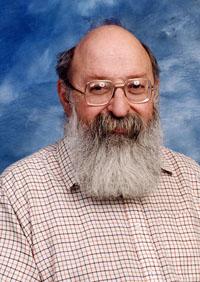Professor Sidney Michaelson
Sidney Michaelson was the first Professor of Computer Science to be appointed at the University of Edinburgh.

He was born and brought up in the East End of London and gained his university education by winning a scholarship to Imperial College, London. He graduated in 1946 with a 1st Class Honours Degree in Mathematics and then undertook a series of research jobs at Imperial College and at the Electrical Research Association Laboratories before taking up a Lectureship in Mathematics at Imperial College in 1949. There he worked on the design and construction of digital computers. Although only very elementary technology was available (Post Office relays and uniselectors), he and his colleagues built a working machine (ICCE1) based on a principle, subsequently known as microprogramming, which has become a cornerstone of the design of almost all digital computers.
Sidney came to Edinburgh University in 1963 when the University appointed him Director of the newly founded Computer Unit. In 1969 he was appointed Professor and Head of the Department of Computer Science. He initiated a significant research activity to develop a multi-user operating system, common now but breaking new ground then. This system emerged in the early 1970s as the operating system (EMAS) on which the University's main computing service would be based for the next two decades.
In the 1980's, he turned his attention to VLSI and formed a new IFIP Working Group devoted to this topic. This subsequently developed into one of IFIP's most active groups, regularly organising workshops and conferences. In 1986 he was presented with the IFIP "Silver Core" award in recognition of his contribution.
His own personal and enduring passion in his later years was stylometry (the scientific study of the usage of words in an attempt to resolve literary problems of authorship and chronology), in which his seminal work with Andrew Morton was particularly exciting and rewarding.
His influence was not just confined to his own subject area. He served on many committees within the University and worked with colleagues inmany other departments. He took a particular interest in theUniversity library and was one of the most ardent protagonists for the automation programme launched in 1983.
Sidney Michaelson was never a dull character. He was a fund of wisdom and anecdotes and had a wicked sense of humour. It was sometimes difficult even in the most empassioned of arguments to know whether he was really serious. His interests within computer science were wide ranging and his ability to attract outstanding research workers led to his Department becoming one of the foremost in Britain with consistently high ratings in both research and teaching.
Sidney died on February 21st 1991 at the age of 65. The abiding memory of him that his family, colleagues and friends keep above all is that of kindness. His door was open to generations of students who could always walk in and find a shoulder to cry on.
